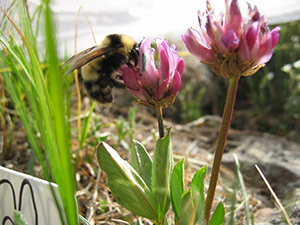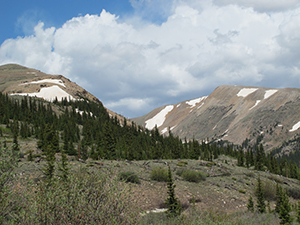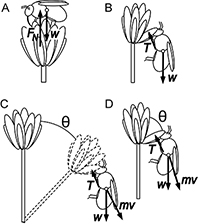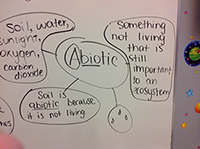Research: Ecology & Teacher Education
Ecology Research
Partner dynamics in plant-pollinator mutualisms
 |
The net outcome of species interactions may vary in strength and even sign depending on other factors in the environment. I began my career investigating and quantifying the relationships between partner abundance and costs or benefits that result from plant-pollinator associations. This work has primarily been situated in alpine habitats of the Colorado Rocky Mountains. I utilize a variety of tools to understand relationships at different spatial and temporal scales. |
Climate change impacts on pollinator populations and communities
| The Intermountain Western US is experiencing environmental impacts from climate change, creating novel challenges for species that occupy these areas. Pollinators in the high alpine habitats of the Rocky Mountains must cope with loss of food resources and upwardly mobile lowland species encroaching into their territory. Here we investigate changes in life history strategies, evolution of ecologically important traits, and novel species interactions that may impact the ability of native alpine species to cope with their rapidly changing envrironment. |
Landscape genetics and movement in pollinator populations
 |
Metapopulation theory predicts that extant populations with greater interconnection via dispersal and gene flow should be more likely to withstand environmental challenges, exhibiting greater likelihood of persistence. We explore the relative extent of genetic connectance among populations of native bumble bees, primariy species that live in high elevation mountainous habitats. |
Behavioral ecology of pollination mutualisms
| Foraging decisions of individual pollinators mediate species associations in pollination mutualisms. Which floral traits drive pollinator preferences? According to Optimal Foraging Theory, the most important "interaction traits" should be those that affect the ratio between pollinators' energy intake and energy expenditure. Behavioral studies in my lab have quantified how altering interaction traits impacts foraging. |  |
Long-term monitoring of pollinator populations and digitization of species records
| My lab has been conducting species inventories in the Central Rocky Mountains since 2008 and in the Southern Appalachian Mountains since 2015. We use a variety of methods for sampling inlcuding netting surveys and colored glycol traps. We often involve citizen scientists in these efforts, which has allowed us to cover increbible distances.We have also begun the process of digitization of all of our records of native polliantors and are in the process of creating a database to make these records publicly accessible. |
Educational research
My work here has sought to understand the effective preparation of science teachers from their pre-service education throughout their teaching careers.Adolescent literacy and the secondary science teacher
 An ever-increasing component of college and career success in the United States is the ability to read and interpret informational text and communicate meaning through writing. Yet, more than 30% of adults fall below intermediate literacy levels, and most students in the US, including more than 60% of those in North Carolina, fall below grade-level proficiency in reading. Research here investigates middle and and secondary science teachers' orientations toward addressing adolescent literacy in their classrooms, as well as teachers' learning during high quality professional development.
An ever-increasing component of college and career success in the United States is the ability to read and interpret informational text and communicate meaning through writing. Yet, more than 30% of adults fall below intermediate literacy levels, and most students in the US, including more than 60% of those in North Carolina, fall below grade-level proficiency in reading. Research here investigates middle and and secondary science teachers' orientations toward addressing adolescent literacy in their classrooms, as well as teachers' learning during high quality professional development.
Science, the environment, and teaching outdoors: Dispositions and orientations of preservice elementary educators
The elementary grades represent a critical developmental time in their lives of all children, where experiences can have lasting impacts on their future dispositions and success. Of interest in environmental and science education are messages that children’s key role models convey about science and the environment and their propensity toward providing positive experiences with science and nature. Along with Drs. J. Joy James and Lisa Gross from the Colleges of Education and Health Sciences, respectively, I have been looking at the dispositions of undergraduate elementary ed majors toward science, the environment, and teaching outdoors. We have been investigating whether these undergraduates own childhood experiences with science and nature play a role in their dispositions as adults and whether these dispositions are altered following experiences provided during their pre-service teacher education program.Contact
Biology Department
Appalachian State University
572 Rivers Street
Boone, NC 28608
(828) 262-2174 office
(828) 262-2127 fax
geibjc(at)appstate.edu
Info for interested students
Master's students should contact me (above) and the graduate Program coordinator, Dr. Ece Karatan, at Appalachian State. Read more about being a Master's student here>
Undergraduate students interested in research experiences should contact me (above) and read more here>